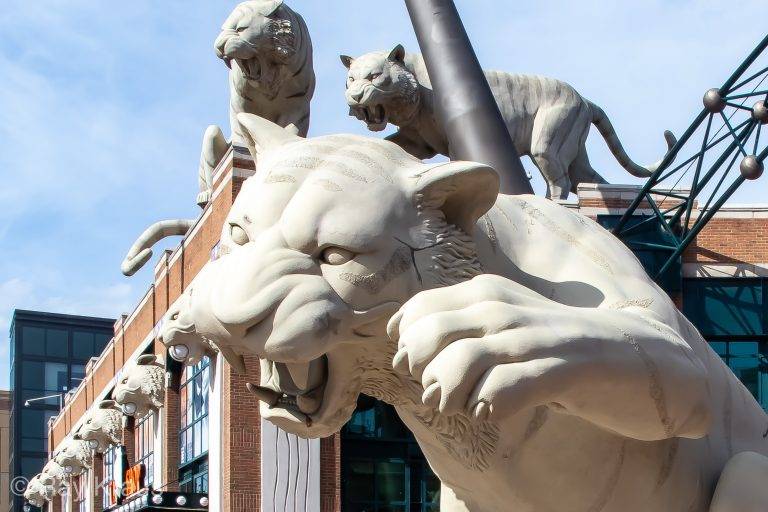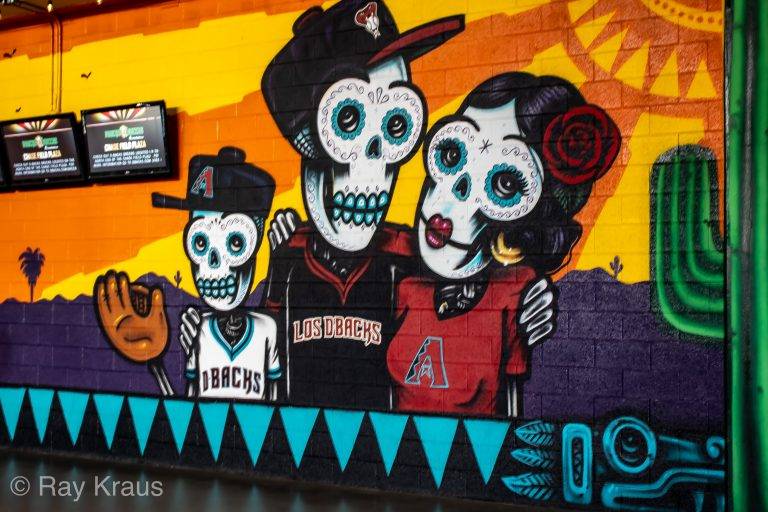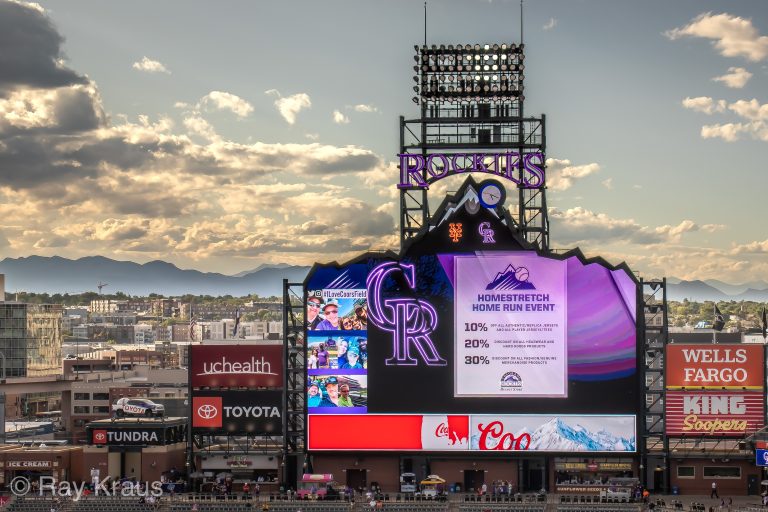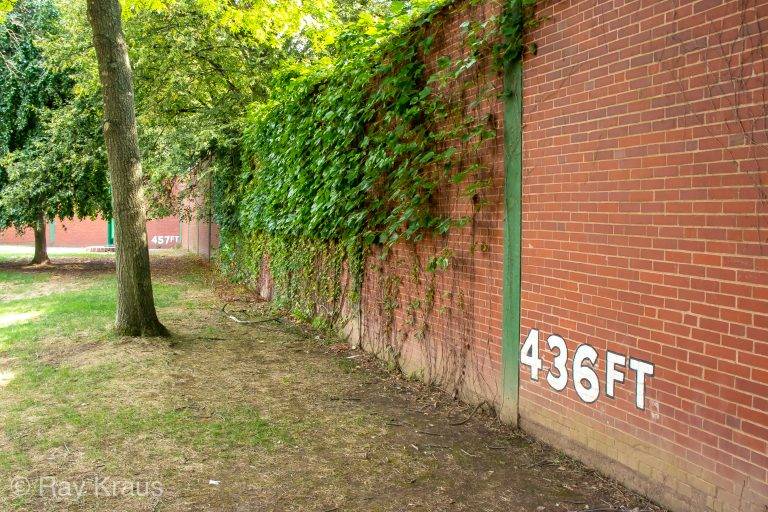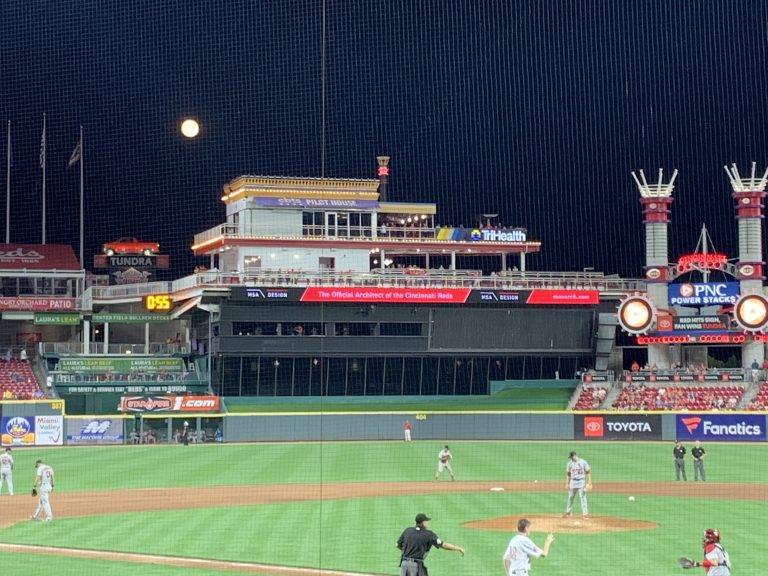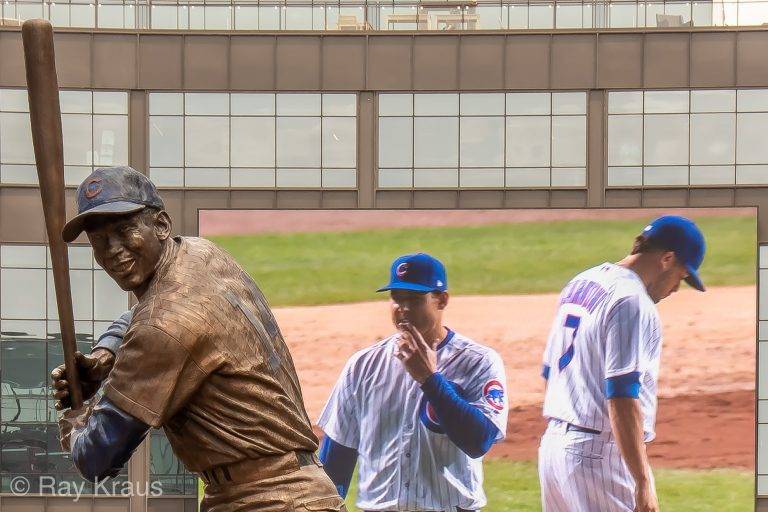The Glory That is Detroit’s Comerica Park
"6.4.3" There are three statues down the block from Detroit's Comerica Park, whose striking boldness herald the serene beauty of the ballpark. Not that, that was their intended purpose. Instead, they were placed on Madison Avenue in front of the Detroit Athletic Club to commemorate its 100th anniversary. The statues "commemorate the role the club has played in amateur athletics and professional sports since its inception in 1887." "Running Back" The statues stand on a landscaped median in the middle of Madison Avenue's wide boulevard. The one on the far right-hand side is the "Running Back" to celebrate Detroit's football heritage. A statue that similarly recognizes the city's baseball past, titled "6.4.3," is located on the other side. One might think that this statue of the baseball player, making his through across the diamond, would speak to me. However, it was the one in the middle that I remember fondly. "The Finish" "The Finish" depicts two runners straining to cross the finish line of a tightly contested race. I also felt that my race was over. In Detroit, I reached the finish line. It was the triumphant and to my summer long, thirty ballpark journey. The day before, I left Tucson on a predawn drive to Phoenix to board my flight bound for Detroit. I had spent the previous two days relaxing and visiting with my brother. Now I was meeting Mrs. Nomad for the final ballpark of my trip. Detroit We enjoy the Detroit area because we have family in Ann Arbor, just a short drive away. My sister (who previously joined us for a game at Wrigley), has lived there for many years. Additionally, Mrs. Nomad's older brother and his wife moved back to Ann Arbor about ten years ago. They met at the University of Michigan when they were students. They returned when my sister-in-law accepted a position at the University. Their homecoming became even better when their eldest daughter, her husband, and two boys moved there from Scotland. In turn, I scheduled the Detroit stop for late September, so Mrs. Nomad could join me. We both wanted the chance to see our family. However, she tends to be busy from late July through August and wouldn't be available at that time. Also, I wanted her to join me on my last ballpark visit. So, September was a good time to go. My plane landed first, and I was waiting at the SkyClub when Mrs. Nomad arrived. On the way to Ann Arbor, we bought supplies to make signs that would announce my achievement at tomorrow's game. Later, we spent a wonderful evening with my in-laws, niece, and her family. Sunday morning, we had bagels at my sister's house and made our signs. Then the three of us drove off to see the Tigers at Comerica. However, this wasn't our first visit. The three of us had been there a few years earlier. In the following years, I had forgotten how impressive Comerica is. While some might…

